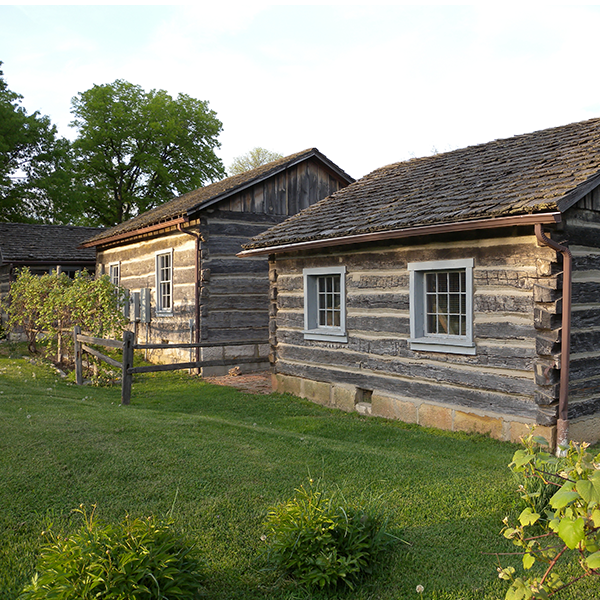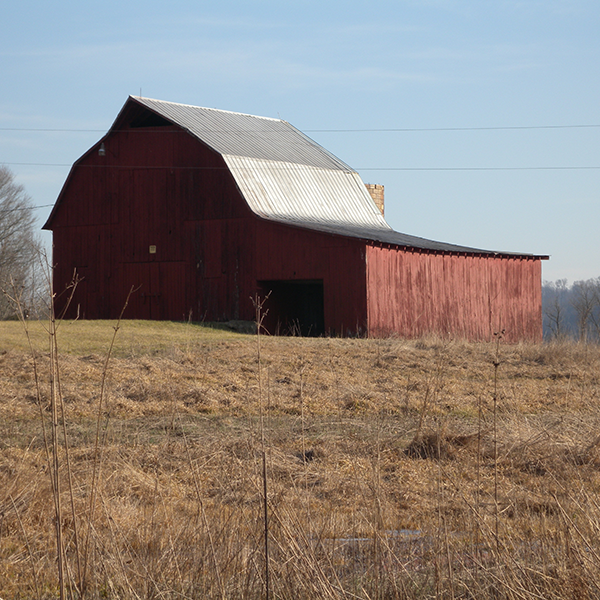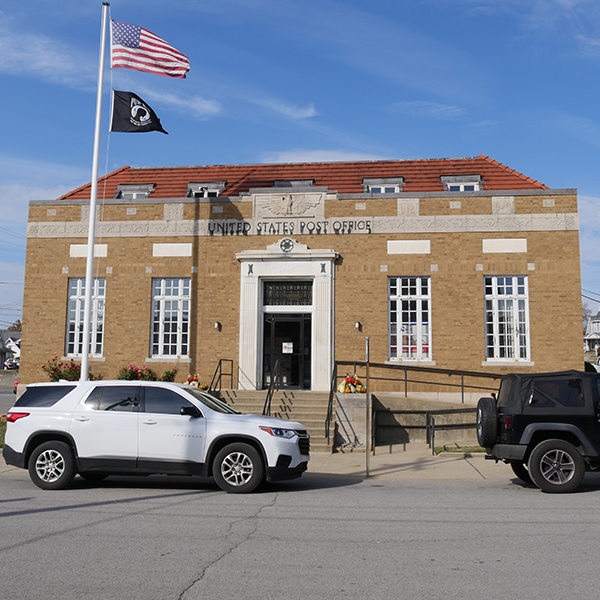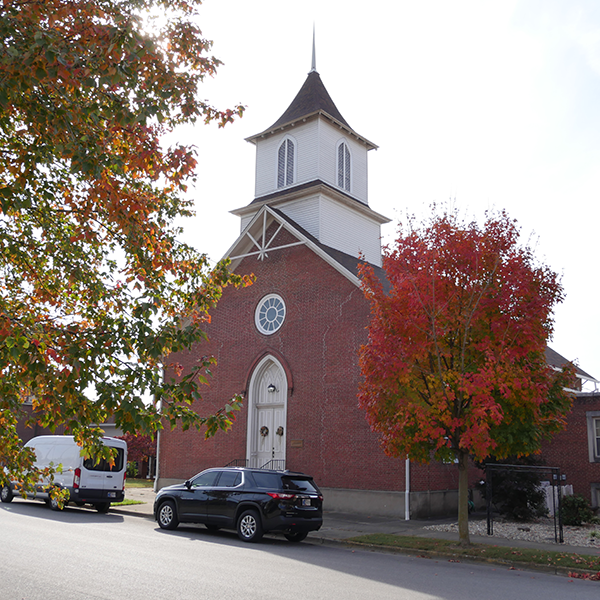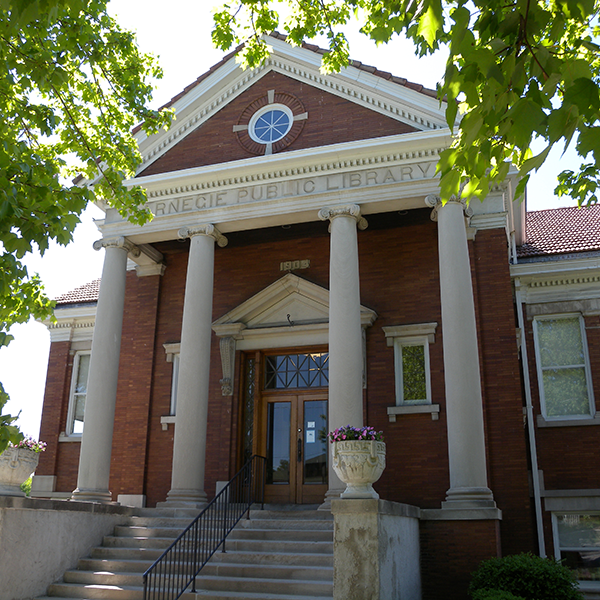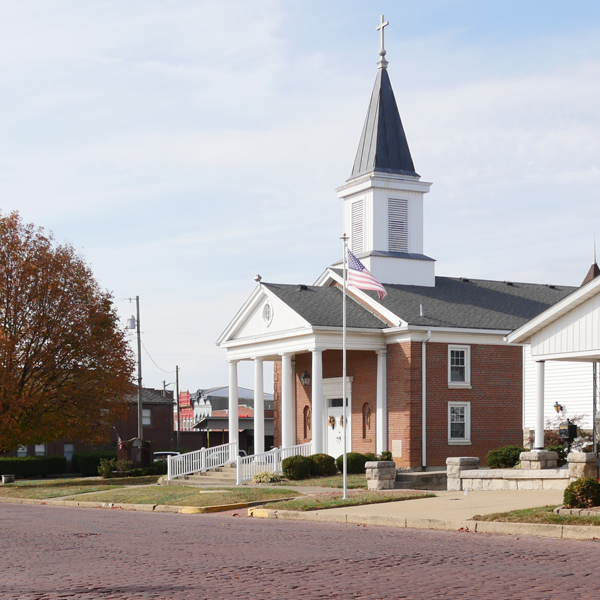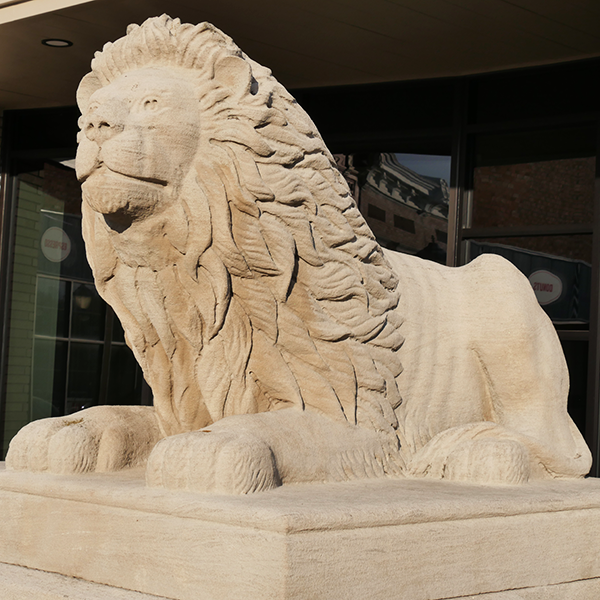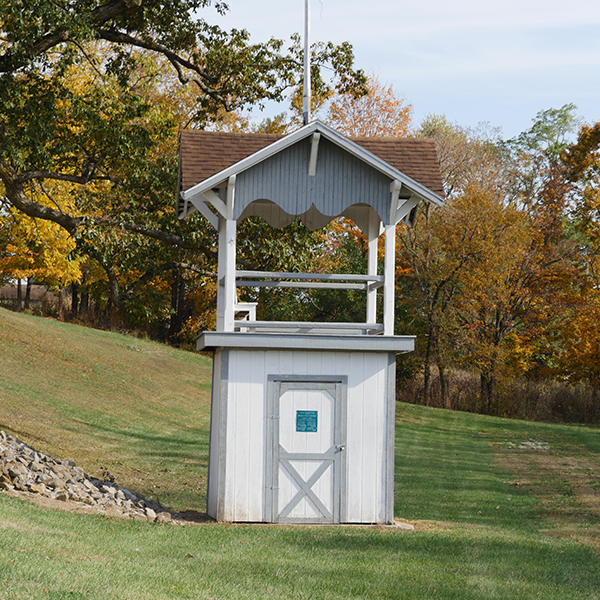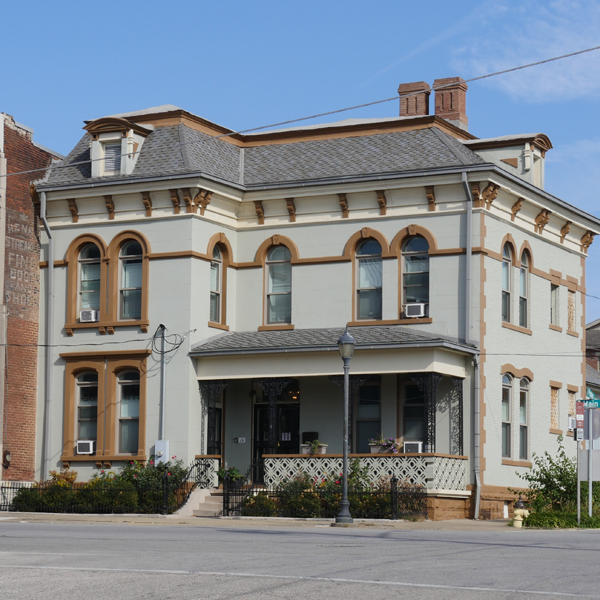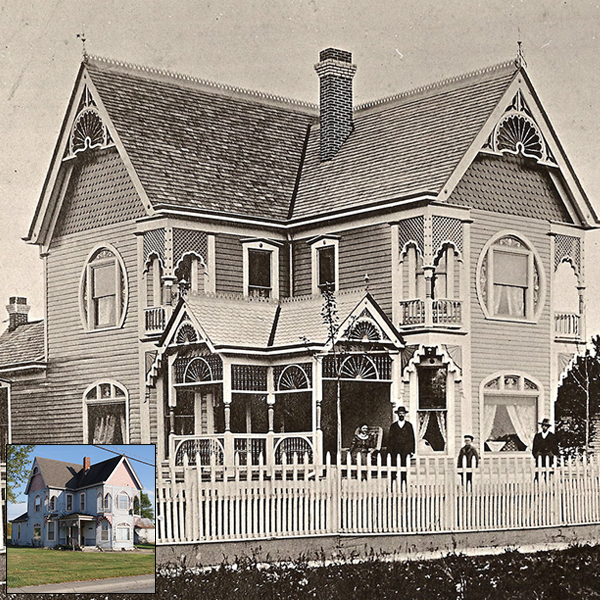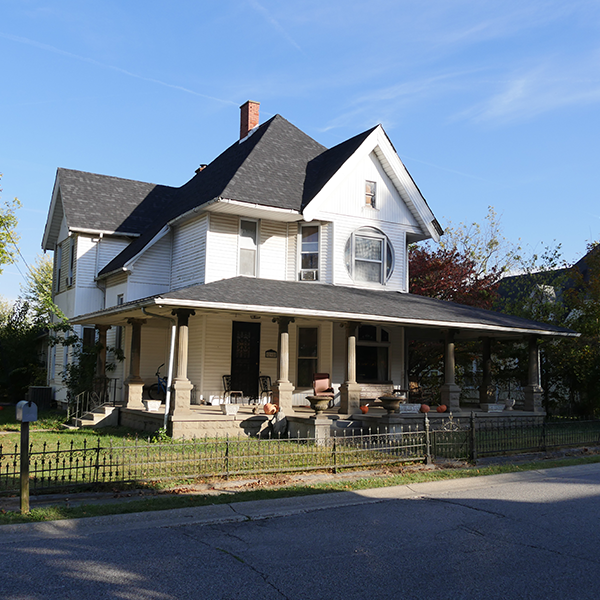Located at 206 South High in Salem is one of three houses built in the Second Empire style by Colonel Redfield, the others the Elliott Home on Market and the Shrum home on Hackberry. Although the residence appears to be constructed of coursed limestone, it is actually yellow poplar with a tromp d'oeil finish. The property was owned by the Persise family, who were early involved with the Persise Hotel (c. 1860) and Sinclair Woolen Mills, and later the Bank of Salem, and construction of the West Baden Hotel. The house was constructed in 1882, and its immediate environment contains many preserved nineteenth century site elements. The High Street f ...
An ongoing project for the John Hay Center, the Pioneer Village continues to grow. The village is a replica of an 1830’s community featuring a jail, blacksmith, school, church, Haganman house, smoke house, barn, bell tower, loom house, and New Philadelphia Post Office and General Store. In 2023 the John Hay Center has also added a concert venue area.
Washington County is home to many unique types of vintage rural barns. These barns have historical significance and were designed to suit the agricultural and farming needs of their time. These barns provide a link to the agricultural traditions and family legacies in the area .
The Salem Downtown Historic District is a national historic district located at Salem, Washington County, Indiana. The original plat of the town, founded in 1814, is within the district. Downtown architectural styles are Italianate, Gothic Revival, Classical Revival, Late Victorian, Early Republic, and Late 19th/20th Century Revivals. The Italianate style is the most common building style extant on the square. Salem's continuing sense of downtown pride and industry is evident in an article printed in the Democratic Sun in 1896: "The store buildings are mostly constructed of brick, some of them being fitted up elaborately and at great expense, A ...
The Salem Post Office is significant as part of the federal program which built new central and branch post offices throughout the United States. Constructed in 1935, it preceded the formation of the W.P.A.
Salem Presbyterian Church was organized in 1817 by Rev. Samuel Shannon of Kentucky. The structure, located on North High near Walnut, was dedicated in 1841, and was the first church built by the congregation. The church is a simple red brick structure with a slender steeple, it is one of the earliest churches in Salem and is constructed of handmade brick and limestone.
Unlike most municipalities in Indiana that received Carnegie Libraries, Salem enjoyed a long-standing tradition of lending books. The Salem Library Association was organized in 1818 and its first collection was housed in the courthouse. This facility of 200 volumes remained in service until 1830. In 1855, 375 books were donated to the county by William McClure of New Harmony, as part of a program for the "mental improvement and instruction of the workman." In the same decade, another philanthropist donated money for township libraries, of which Salem was a beneficiary. A local philanthropic group called the Fort Nightly Club solicited Carnegie donat ...
In 1828 the Methodist Church built their first sanctuary at High and Market Streets. The first floor brick walls of this structure still remain although it was largely destroyed by a fire in 1901. In 1893 a new Romanesque church was built at 200 East Market which was demolished in 1962 in order to build the present structure. Although the church is not architecturally significant, it is notable for the contribution of its prominent members the DePauw family, whose endowment established DePauw University in Greencastle, Indiana.
A contributing object for the Salem Square historic district includes a stone lion on the northeast side of the square. It was carved in 1884 to stand sentinel in front of the State Bank of Salem. The lion stood sentinel before a group of buildings developed by Lee W. Sinclair. The buildings have been demolished, but the lion remains a town landmark. The lion was carved from a single block of limestone by Collins James Morgan, who also worked on the construction of the Courthouse.
Walking through some of the Washington County Fairgrounds barns is like walking back in time. The wood framed structures have undoubtedly welcomed generations of family members as they pursue a career in agriculture. The Washington County Farmers & Merchants fair takes place each summer and is a wonderful opportunity to view the historic structures. The Fair includes livestock exhibiting and judging, craft exhibits and judging, midway rides and more.
The rockfaced Oolitic limestone used on the facade of the current Washington County Courthouse was locally quarried and cut, one mile southwest of town. In the nineteenth century, this was the first and only working quarry in the county, originally opened by Emmanuel Zink and James Needham in 1866. Rock quarried here was originally called "Salem limestone" before being renamed oolitic. The newels and columns incorporated in the courthouse design are all unique efforts of individual stone carvers.
This structure was built in 1881, and is a Second Empire style brick and stone building. It consists of a 2+1⁄2-story residence with a mansard roof with a 1+1⁄2-story rear jail addition. An office addition was added to the jail in 1974. The structure was listed on the National Register of Historic Places in 1984. It is included in the Salem Downtown Historic District. The sheriffs residence stands in front of the jail structure on South Main and is one of three French Second Empire residential structures in town and is one of the few designed by an architect, Joseph Balsley. The local contractors were Alfred Shrum and H.H. Routh, both of whom are i ...
Campbellsburg grew around a grist mill established by John T.C. Wilkins in 1859. Additional mills followed, and by the town’s incorporation in 1875, Campbellsburg’s bustling downtown included commercial buildings, three hotels, three churches, a railroad depot, a bank, and a school. Wilkins built a modest home on Sycamore Street at the entrance to town in 1858. His son, William, later occupied the house and in the late 1890s undertook a major renovation, expanding its footprint and adding embellishments, including horseshoe-shaped stained-glass windows and elaborate spindled porch work – all adapted from pattern books published by George Barber, a T ...
Campbellsburg grew around a grist mill established by John T.C. Wilkins in 1859. Additional mills followed, and by the town’s incorporation in 1875, Campbellsburg’s bustling downtown included commercial buildings, three hotels, three churches, a railroad depot, a bank, and a school. Wilkins built a modest home on Sycamore Street at the entrance to town in 1858. His son, William, later occupied the house and in the late 1890s undertook a major renovation, expanding its footprint and adding embellishments, including horseshoe-shaped stained-glass windows and elaborate spindled porch work – all adapted from pattern books published by George Barber, a T ...
Campbellsburg grew around a grist mill established by John T.C. Wilkins in 1859. Additional mills followed, and by the town’s incorporation in 1875, Campbellsburg’s bustling downtown included commercial buildings, three hotels, three churches, a railroad depot, a bank, and a school. This home was established from the designs of George Barber, a Tennessee architect whose designs filled mail-order catalogs in the in the 1890s. Known for his exuberant Queen Anne-style houses, Barber’s plans regularly featured turrets, balconies, porches, projecting windows, arches, and gingerbread trim. Today this group of four surviving houses constitutes a rare co ...
Campbellsburg grew around a grist mill established by John T.C. Wilkins in 1859. Additional mills followed, and by the town’s incorporation in 1875, Campbellsburg’s bustling downtown included commercial buildings, three hotels, three churches, a railroad depot, a bank, and a school. This home was established from the designs of George Barber, a Tennessee architect whose designs filled mail-order catalogs in the in the 1890s. Known for his exuberant Queen Anne-style houses, Barber’s plans regularly featured turrets, balconies, porches, projecting windows, arches, and gingerbread trim. Today this group of four surviving houses constitutes a rare co ...




